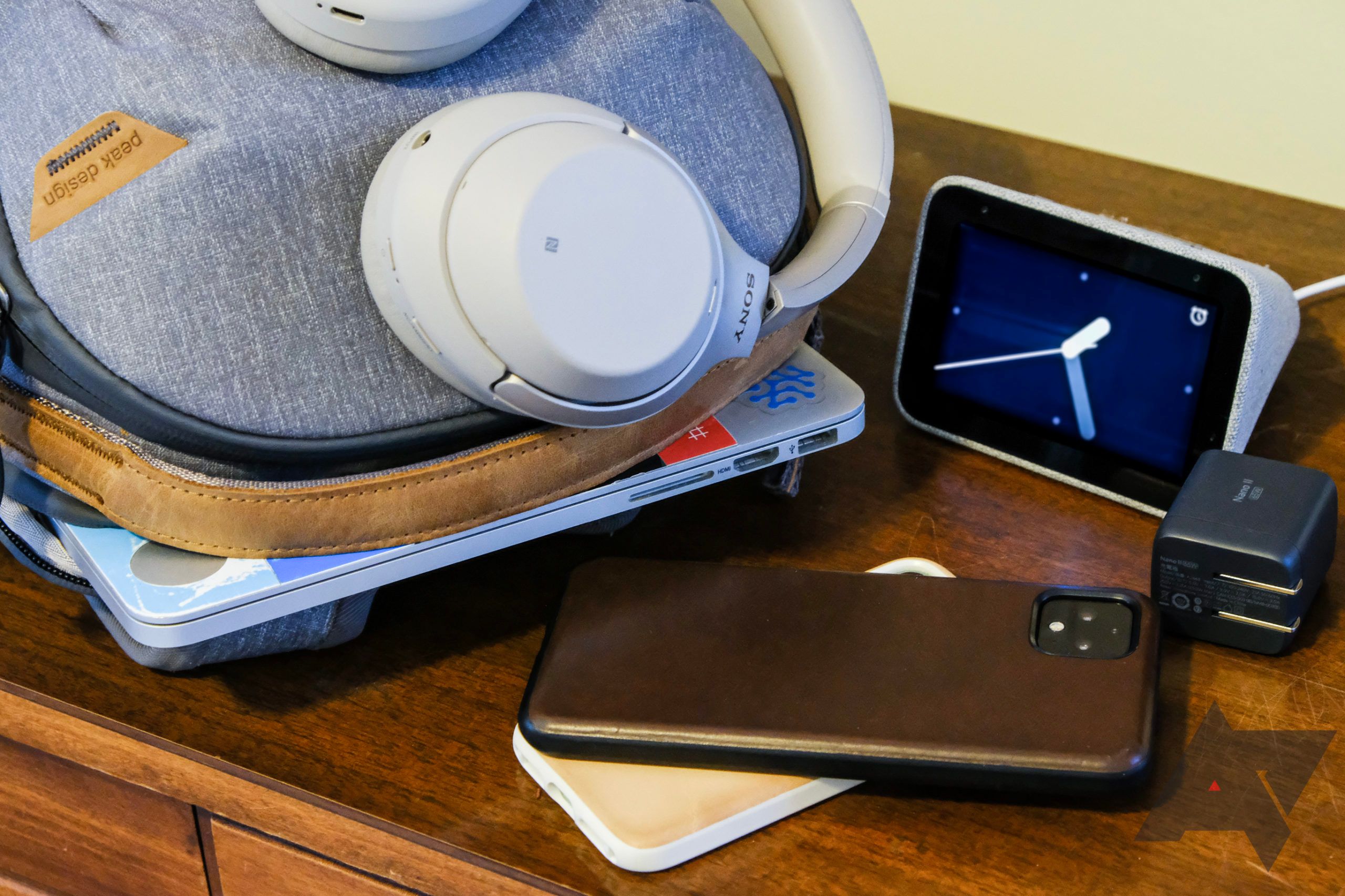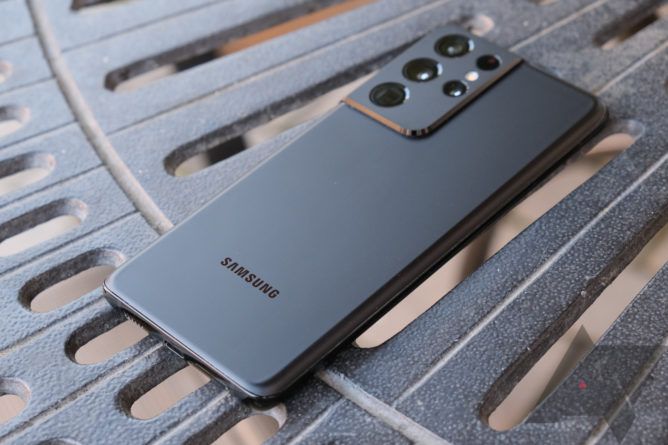It's officially been summer for the last few days, so everyone and their grandma is going to start slinging lists at your face for "essential" or "indispensable" things you should buy to truly enjoy the season, especially since this summer is set to be big for travel. To buck that trend here's a slightly different list. Everything on it is fully optional, completely non-essential, and just sort of nice to have in a discretionary way. On top of that, this isn't some list of things I've never touched that I'm just pushing for an affiliate sale; they're almost all things I personally use (with two justifiable exceptions — I used the older models).
Peak Design Everyday Backpack Zip
The first thing you need to worry about on a summer trip is what stuff to bring with you. The second thing is what to put that stuff in. This fixes the latter problem.
I'm a big fan of most of Peak Design's products, as a lot of folk in the tech space are. I usually carry a non-phone big-boy camera with me on trips, and the company's bags are perfectly designed for that, nestling a camera body and a few lenses safely and compactly right next to your water bottle or toiletries. However, I'm not too big to admit that I actually made a bit of a mistake when it comes to Peak Design's backpacks for a while.
I've been using a 30L Everyday Backpack V1 for years, and I just sort of assumed that the top-flap design was inherently better, all the while never really taking advantage of it. Now that I've been able to use the Everyday Zip, I can admit that was absolutely wrong, and zippers are better. As I get older and my back gets more angry, I've also realized that I don't need 30L of crap tied to it. Between the two revelations, I personally recommend the less expensive 15L Everyday Backpack Zip over the standard, pricier, non-Zip model, unless you know you need the extra capacity — and you probably don't.
It's comfy to wear, the internal design is extensively customizable to hold your gear perfectly and safely. The only real drawback to Peak Design's organizational system is that the most efficient use of them may hide some of your gear from easy access — you can't see two more lenses that are held in flipped-open flaps on the other side in the image above. Still, I speak from years of experience when I say Peak's bags are pretty fantastic, durable, and unarguably more stylish than most camera/gear bags.
You will need to pack on the "lighter" side, though, with the 15L model — I can get away with a 13" laptop or tablet, one camera body, 2-3 lenses, a couple phones, various accessories, and a 28,000mAh external battery or my Switch — but a lighter setup means more time on the road, and you don't have to pack up your whole office for vacation.
Nomad Rugged Leather case
I'm something of a leather aficionado and an amateur leatherworker. I like good quality leather goods that age gracefully, but I also don't want to spend Hermes-level money to enjoy it, so I make my own wallets, bags, and what have you. Unfortunately, I can't exactly saddle stitch myself a leather phone case. There's a whole lot more engineering that goes into that sort of thing. Enter: Nomad.
The back of the company's cases is made from vegetable-tanned Horween leather with a nice even grain, free of scars or blemishes as you might find on cheaper products. Plus, the fact that it's an unsealed vegetable tanned leather means it will "patina" over time as it wicks up oils and dirt from your hands. That's not the sort of thing everyone digs, but I do, though you should note that that slowly cumulative effect is far more noticeable on the company's lighter-colored cases.
Unfortunately, the company's selection of Android-related accessories is highly limited to the Pixel 4 series (currently on sale) and the new Pixel Buds A, but many of our readers also use iPhones, and they do make cases for them as well. If their selection happens to cover your devices, I think you'll be pretty pleased with them.
Lenovo Smart Clock with Google Assistant
The OG color-screen Lenovo smart clock is in my top five favorite gadgets, and I remain stunned that reviews did not paint it more positively. It's an amazing gadget, and you can usually pick one up now for just $50.
My bedstand is the world's ugliest and we're in the middle of a minor renovation, so you get images from our review.
Sure, this isn't something you can use on a summer trip, but it is something that can help make sure you don't miss a flight or drive.
When you get down to it, the Lenovo Smart Clock is basically just your normal smart display, but with a few added bedtime-appropriate perks, including a much smaller footprint that doesn't eat half of your bedstand (like the new Nest Hub), a USB port to charge your phone if you need it, and a UI that works a little better on the smaller screen. You can still set alarms, control your Assistant-connected smart devices, play music, as questions, see your schedule, get the news, etc. It's a smart display at a smarter size for bedtime, and I love mine.
Which of these would you rather fit on your bedstand?
This is a hill I will die on: the OG Lenovo Smart Clock is wildly underappreciated, I use it literally every day, and it's one of my favorite at-home devices.
Anker Nano II 65W GaN Charger
I spend a lot of time testing power accessories here at Android Police, because we like doing more in-depth testing whenever possible beyond "well, it's small, and it worked with my phone/laptop." Though a full review is still a work in progress, I've been testing Anker's new Nano charging lineup, and so far it looks like a new gold standard in charging.
The two higher-wattage models in the lineup support PPS, which is pretty great and an important standard. Admittedly, not many devices use PPS now, but it will be important in the future as more gadgets pick it up since it allows for more precise delivery of power. That can mean faster charging that's easier on your phone (or tablet, or laptop's) battery.
In extensive testing, the $40 65W Anker Nano II runs cool, quiet, and meets spec. It's also pretty damn dinky and has a folding design — some smaller chargers don't, which is both annoying but also a potential issue if those prongs jab into something delicate in your bag. The only potential issue I've observed is that its supported PPS voltage and current range can cause it to exceed its maximum power output and cut out in artificial bench testing, but I strongly doubt that will be an issue in the real world with actual devices.
Sony WH-1000XM4s
The whole point of travel for pleasure is not to isolate yourself. But, that doesn't mean you need to suffer through noises the whole way there. Whether you're stuck on a plane or a bus, you've got time to kill in transit and no reason to spend it listening to the jet engines whine or the tires grinding away on the pavement. Get a pair of good, comfortable, nice-sounding noise cancelling headphones, and get the best.
Now I haven't used Sony's new WH-1000XM4s, but I have a few years of experience with the prior XM3s, and the new models are supposedly about the same, just with better connectivity, better noise cancellation, and improved sound. So, if anything, you can expect a better experience than I did (and I had a great experience).
In the beforetimes, when we could all travel safely, My XM3s were my backpack buddies, joining me on every single flight everywhere. Even if I wasn't listening to music, they were a godsend for tuning out background noises so I could sleep, or drowning out ambient noise in public places when I needed to bang out a post fast.
You can read our review, but the short version is that they're bar-none the best noise-cancelling headphones you can buy. Yes, at $350, they are a little excessive, but that's sort of the point of this list.
Samsung Galaxy S21 Ultra
We said this was a list of non-essentials, and though a phone is arguably essential, nothing screams "I don't need this," like a $1,200 ($1,140 at the time of writing) Samsung Galaxy S21 Ultra. Yes, it's expensive. Yes, it's overkill. You do not have to buy one. But it's the best phone you can have in your pocket this summer.
It's fast, durable, has a big and smooth display, Samsung's software update policy is now the best in the Android business, and it's got a great camera system. That last bit is key for proper summer fun. You get both an excellent primary with a positively huge sensor, which makes for great low-light performance and a pleasing depth of field, but you also get one of the best telephoto cameras you can buy. Samsung has both a periscope-style assembly that offers up to 10X "zoom," and a more standard 3x telephoto, and they both do a far better job than digital zoom.
When you're driving through Moab, Redwood National Park, or Acadia snapping photos and zooming in on mountains or distant animals, do you want them to be the sort of pixelated mess your iPhone-toting parents snag with digital zoom set to cruise control, or would you rather the photos you take actually look nice? If not for you to look at later, at least so people can recognize what the hell you captured when you brag about the trip.
I do need to point out that this is the one gadget on this list I actually haven't had a chance to use myself, but I'm extensively familiar with both prior Ultra models and other phones in this year's S21 lineage, and I have no issue plugging the gap, thanks to our Editor in Chief David Ruddock's personal recommendation.
Travel this summer may still be a question, but vaccination rates are up and infections are down. After the last nearly year and a half, many of us are itching to get back out into the world — or at least escape our own little corner of it for a while. And while you don't need anything on this list (really, you don't), it's okay to admit to yourself that you might want it. Maybe it's time to treat yourself.


